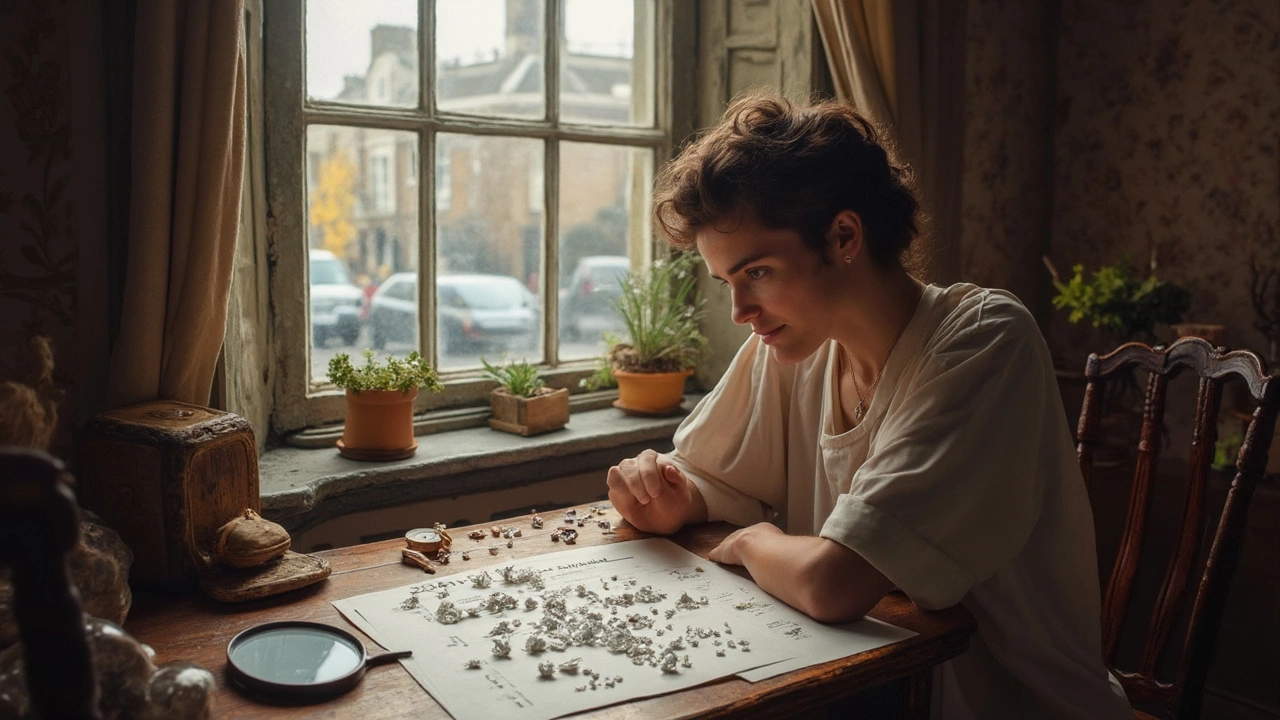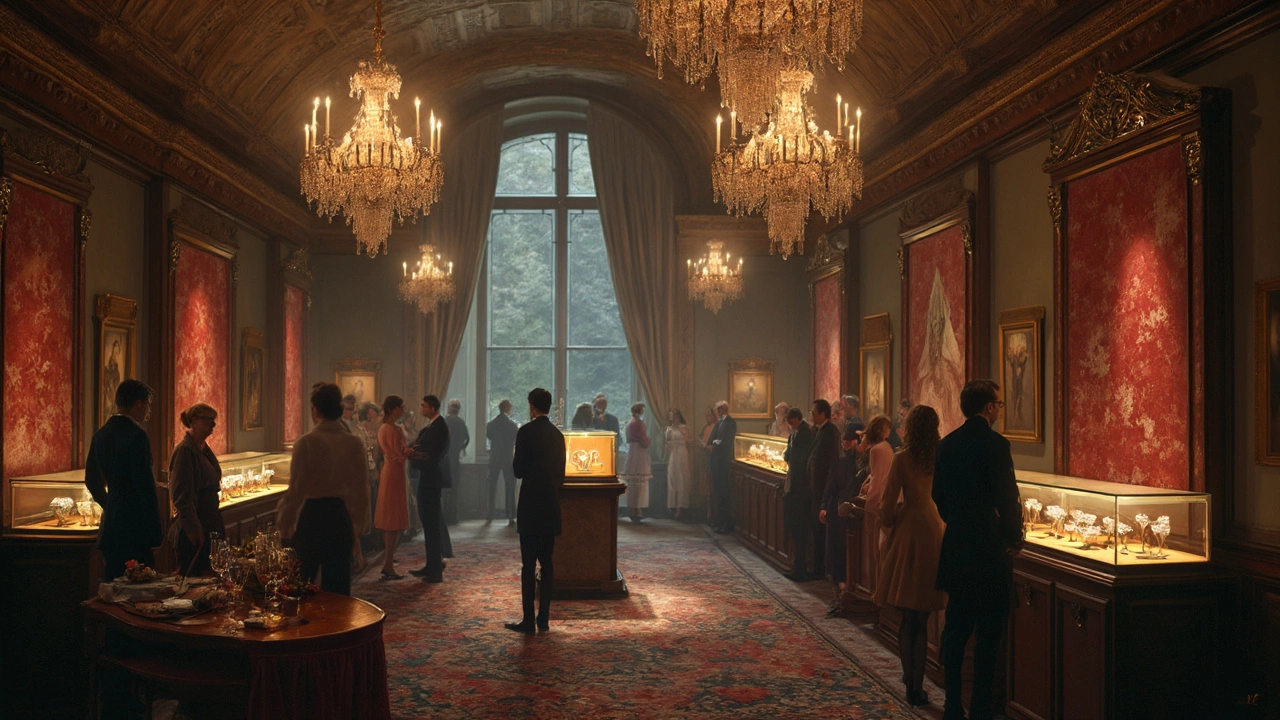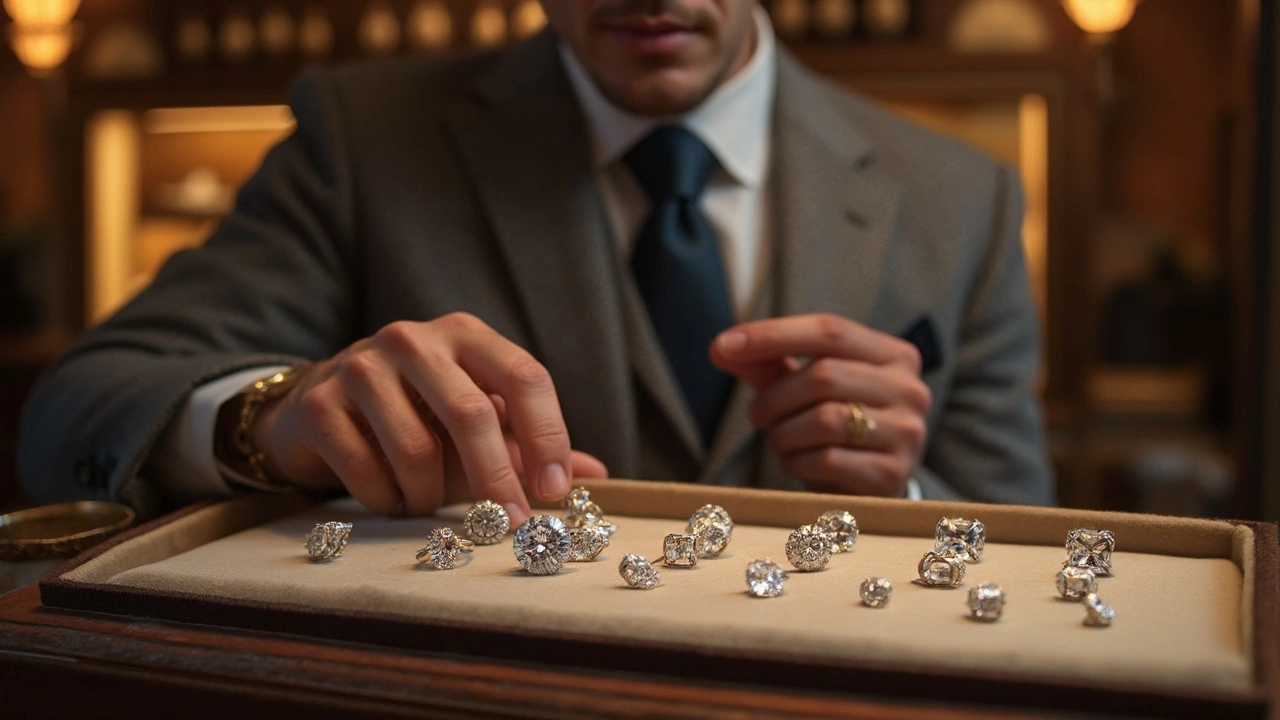If you've got $5000 to spend on a ring, you might be wondering how many carats that cash will fetch you. Well, it’s not a straightforward answer because it depends on various factors. Here's the scoop: the carat is just one aspect. You also need to consider clarity, color, and cut – these are what jewelers call the 4 Cs of diamonds. They all play a big role in how much sparkle and value your ring will really have.
So, what's the trick to getting the most bang for your buck? You can aim for a slightly lighter carat weight if it means you get a stone with better clarity and cut, which allows it to shine more brilliantly. Or, you could choose a halo setting that makes the diamond look bigger without increasing the carat size. It's like an optical illusion that saves you money.
There’s also the option of lab-created diamonds, a trendy and often cheaper alternative - they're real diamonds minus the hefty price tag of natural stones. Smart, right? In this piece, we'll cover all you need to know to make a savvy purchase without blowing your budget.
- Understanding Carats and Pricing
- Factors Affecting Diamond Size vs. Price
- The Role of the 4 Cs in Value
- Exploring Alternatives and Savings
- Tips for Buying Within Your Budget
Understanding Carats and Pricing
So, what exactly is a carat? It sounds fancy, but a carat is just a unit of weight for diamonds and other gems. One carat is equal to 200 milligrams. Simple enough, right? But when it comes to pricing, it's a tad more complicated. You see, the price per carat increases exponentially as the carat weight goes up. So, a 2-carat diamond isn't just double the price of a 1-carat diamond - it can be a whole lot more.
Why does this happen? Well, larger diamonds are rarer to find in nature, which means they come with a bigger price tag. But if you're aiming for the perfect $5000 ring, you might not get a big rock. Instead, you'll balance carat with other diamond qualities. Confused yet? Don't worry, we've got you.
How Much Carat for $5000?
Your $5000 budget likely gets you a diamond ranging from about 0.7 to 1 carat, depending on quality. The carat isn't everything, though! A smaller diamond with excellent cut and clarity often looks better than a larger one lacking in these areas.
- Cut: The cut affects how the diamond interacts with light, creating that magnificent sparkle. A well-cut diamond can shine brightly compared to a dull poorly-cut diamond, even if it's bigger.
- Color: The less color a diamond has, the higher its grade. But unless you're putting two stones side by side, subtle differences aren't a big deal.
- Clarity: Almost no diamond is perfect. Many have tiny imperfections. A good balance can save you bucks without sacrificing beauty.
Remember, the trick is in the balance. You don't need to max out carat weight to get a ring that wows.
Factors Affecting Diamond Size vs. Price
When you're eyeing a diamond ring, size isn't the only thing that dictates how much dough you’ll need to shell out. Several factors come into play when determining a diamond's carat weight versus its price tag. Let's break these down so you can be a savvy shopper.
1. The Cut of the Diamond
The cut isn't just about the shape—it's how well the diamond's facets interact with light. A well-cut diamond can make even a smaller carat weight dazzle, meaning you might spend more for a high-quality cut that maximizes brilliance.
2. Clarity and Color
Clarity refers to the internal and external blemishes or 'inclusions' of a diamond. Fewer inclusions mean a clear sparkle, and that clarity bumps up the price. As for color, diamonds range from colorless to shades of yellow or brown, with colorless being the rarest and usually most costly. Balancing these elements could lead to a better-sized diamond for your budget.
3. Shape and Style Preferences
Different diamond shapes come at different costs, even if they have the same carat weight. Round diamonds are generally more expensive due to the precision required in the cutting process. Versatile shapes like oval or pear can offer more carat bang for your buck.
4. The Magic of Size Thresholds
Diamonds are often priced disproportionately based on certain size thresholds. Jumping from a 0.99-carat to a 1.0-carat can significantly increase price even though visually the difference is minimal. Buying just under these thresholds can be a clever way to save money.
5. Lab-grown Options
If you’re not set on natural diamonds, lab-grown diamonds are a great alternative. They're real diamonds and usually about 30% less expensive, allowing you to potentially upsize the $5000 ring without breaking your budget.
To visualize how these factors balance out, consider this sample data:
| Carat Weight | Clarity | Average Price |
|---|---|---|
| 0.75 | VS2 | $3,800 |
| 1.0 | SI1 | $5,500 |
| 1.25 | I1 | $6,500 |
In summary, a higher carat might not always be the best choice. Weighing these factors wisely can help you score a stunning diamond for a great deal. Keep these in mind, and you'll find the perfect ring that ticks all the boxes.

The Role of the 4 Cs in Value
Shopping for a ring with a $5000 budget? Then you really need to get friendly with the 4 Cs: Carat, Clarity, Color, and Cut. These terms might sound technical, but stick with me, and it’ll all make sense. They’re super important to understand because they determine the quality and cost of a diamond—and help you find that perfect balance between size and brilliance.
1. Carat
Carat refers to the diamond’s weight, not its size, which is why a higher carat will generally cost more. However, a bigger carat doesn't automatically mean a bigger-looking diamond. It's all about the overall appearance and setting.
2. Clarity
Clarity measures how flawless the diamond is, as in, fewer imperfections inside (inclusions) or on the outside (blemishes). High clarity usually comes with a heftier price tag. For budget-savvy buyers, a good strategy is to go for a diamond that's eye-clean, meaning any flaws are too tiny to be seen without magnification.
3. Color
When it comes to color, diamonds are graded from D (colorless) to Z (noticeable color). Colorless diamonds are the priciest, but unless you're a gemologist, you might not notice slight color differences. So getting a near-colorless diamond can sometimes offer better value for your dollar.
4. Cut
The cut is super important because it impacts how well the diamond reflects light, i.e., its sparkle. A well-cut diamond will look dazzling and larger than a poorly cut one, even if it has a lower carat weight. It's often smarter to prioritize cut if you're looking to maximize visual impact.
Balancing the 4 Cs
Finding the right balance among the 4 Cs can be tricky but keep this in mind: a brilliant cut can compensate for a smaller carat, and a nearly colorless diamond might be more affordable than a colorless one while still looking fab. It's like playing Jenga but for jewelry!
| Carat Range | Price Estimate |
|---|---|
| 0.5 - 1.0 | $1,500 - $4,000 |
| 1.0 - 1.5 | $4,000 - $8,000 |
Remember, when it comes to budgeting for a $5000 ring, being mindful of these factors can make a real difference. Dive into the details, and you won't be overwhelmed. Instead, you’ll be empowered to choose a ring that not only fits your budget but also shines with brilliance.
Exploring Alternatives and Savings
Broke the bank with wedding costs and want to snag a classy $5000 ring without it feeling skimpy on the bling? You’ve got a few sneaky tricks up your sleeve. Let's talk options that can make that budget stretch further while still giving you a ring worth flaunting.
1. Look at Lab-Created Diamonds
First off, lab-created diamonds. They’re the real deal, chemically, physically, and optically identical to mined diamonds. What's the catch? There isn't much apart from a lower price tag! For the same cash, you might end up with a larger or higher quality diamond than a mined one. Plus, they’ve got the eco-friendly badge of honor. Prices have dropped considerably in the last few years, opening doors to what seems like luxury but is pretty budget-friendly.
2. Consider Alternative Stones
Who says it has to be a diamond? Sapphires, morganite, or even moissanite can offer stunning sparkle at a fraction of the cost. Moissanite, particularly, shines even more brilliantly than diamonds. These alternatives are not just budget-friendly, but they also allow you to express unique style preferences.
3. The Setting Makes a Difference
Choosing a more intricate setting can enhance a smaller diamond's appearance. Look for halo settings where smaller diamonds encircle the center stone, making it look bigger and adding extra sparkle without breaking the bank.
4. Play with Carat Weight
Understanding carat weight can also save you big. Diamonds just shy of a full carat can be significantly cheaper, and the visual difference is often minuscule. A 0.9 carat diamond can save you a chunk of change compared to a 1-carat diamond, allowing you to allocate more toward quality or a better setting.
5. Check Out Vintage and Second-Hand Options
Vintage rings or estate sales are gold mines for unique, affordable rings. Not only do they carry history, but they often come with characteristic craftsmanship and detail you don’t find in today’s mass-market designs. It's a win-win if you're after a ring that tells a story.
When it comes to buying the perfect ring within your budget, it's all about knowing where to compromise and where to invest – and hopefully, this gives you the confidence to find that one ring without overspending!

Tips for Buying Within Your Budget
Hunting for a ring without blowing past your $5000 mark? You're in the right place. Let's make sure you get the best bang for your buck while keeping it classy.
1. Focus on the Diamond's Cut
The cut of a diamond significantly influences its sparkle, which means it's not something you want to ignore. A well-cut diamond can look more brilliant than a larger, poorly cut stone. So, even if you're going for a lower carat weight, a superior cut will ensure you don’t skimp on the bling factor.
2. Opt for Slightly Off-Color Diamonds
Consider diamonds that are down the color scale a bit, like H or I. They often look just as stunning, especially when mounted in yellow gold, but come at a more budget-friendly price than the ultra-clear D or E diamonds.
3. Try Halo Settings
A halo setting features smaller diamonds encircling the center stone, giving it a larger appearance. It’s a clever way to make a ring look luxurious without ballooning your budget.
4. Check Out Lab-Created Diamonds
Don’t dismiss lab-created diamonds outright. They’re chemically identical to natural stones and can be 30-40% cheaper. That way, you might score a bigger rock for your $5000. Plus, they’re more eco-friendly, which is a win-win!
5. Be Open to Negotiation
Don’t shy away from negotiating prices at local jewelers. Sometimes they have flexibility their big-box counterparts lack. Also, keep an eye out for deals during holiday sales when bargains are more likely.
Here's a quick look at how much you might expect to pay per carat for quality diamonds at different market grades:
| Quality Grade | Price per Carat |
|---|---|
| Excellent | $6,000 - $9,000 |
| Very Good | $5,000 - $7,000 |
| Good | $4,000 - $5,500 |
Staying savvy and informed can transform your diamond shopping experience. Remember, the perfect ring is out there waiting for you, even if you're on a budget. Happy hunting!

